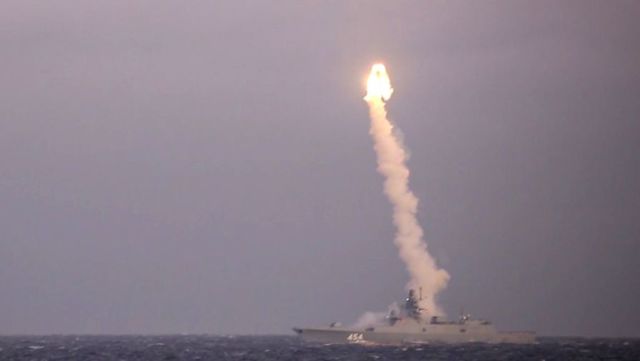Launch of hypersonic missile "Zircon" made in the White sea
Two days after training and combat tests of Intercontinental ballistic missiles, the Russian military conducted another maneuver in the White sea. This time, the combat readiness of the Zircon hypersonic missile was checked. It was first tested when hitting a coastal target. Before that, in October and November, the missiles were tested on sea targets.
The Russian military tested a hypersonic missile "Zircon". This was reported in the Ministry of defense. The weapons were launched from the Admiral Gorshkov frigate in the White sea. The target was 350 km away on the shore-the Chizha landfill in the Arkhangelsk region. The missile successfully hit the target. Its flight speed exceeded Mach 8.
During the missile launch, the areas where the tests were conducted were closed with the participation of the forces of the white sea naval base of the Northern fleet.
These exercises were the first tests of the "Zircon" with a target that was on land. Prior to that, Zircon launches from Admiral Gorshkov took place in October and November. In October, the first training launch of this hypersonic cruise missile took place. The sea target was located in the Barents sea. The maximum speed of the "Zircon" was 8 speeds of sound, the flight altitude reached 28 km. In November, the sea target was at a distance of 450 km, the flight speed was the same. Both tests were considered successful.
The Russian Zircon missile is the world's first sea-based hypersonic cruise missile. The maximum range of the rocket is 1000 km, the speed reaches eight to nine Mach.
Chief of the General staff Valery Gerasimov previously spoke about such plans of the Russian authorities.
Two days earlier, the Russian military tested ballistic and cruise missiles during a strategic nuclear forces training session. The weapons training launch was led by the Supreme commander-in-chief, Russian President Vladimir Putin, the country's defense Ministry said.
An Intercontinental ballistic missile, a submarine-launched ballistic missile, and long-range precision-guided air-launched cruise missiles were tested. Combat training launches were carried out "from the state test cosmodrome Plesetsk, from the Barents sea, as well as Tu-160 and Tu-95MS aircraft from the airfields of Engels and Ukrainka," the Ministry added.
The Agency also released records of how the weapons were launched. According to the videos, the Russian military launched an Intercontinental ballistic missile "YARS"from the Plesetsk cosmodrome. In addition, they worked out the actions of calculations of strategic missile launchers, crews of strategic aviation and nuclear submarines of the Northern fleet.
The Karelia nuclear-powered missile cruiser provided the launch of a ballistic missile. The cruiser was submerged. Its main armament is the Sineva Intercontinental ballistic missile. According to TASS, before that, the training launch from Karelia was made more than a year ago - on October 17, 2019.
The day after the tests, the British tabloid The Daily Mail published an article that focused on nuclear weapons tests in Russia. The material included expressions such as" preparing for a nuclear war "and"escalating tensions with the West."
The author of the text pointed out that Russia has been conducting military exercises more often in recent years. He believes that this is a consequence of the growing tension in relations with Western countries, which began after Crimea became a Russian region after a referendum in 2014.
In addition, the article also mentions the fact that the termination of the strategic offensive arms reduction Treaty (start-3) is two months away, and it has not yet been extended. British journalists recalled that this document is the last agreement between Russia and the United States that would control the countries ' nuclear weapons.
Angelina Milchenko

